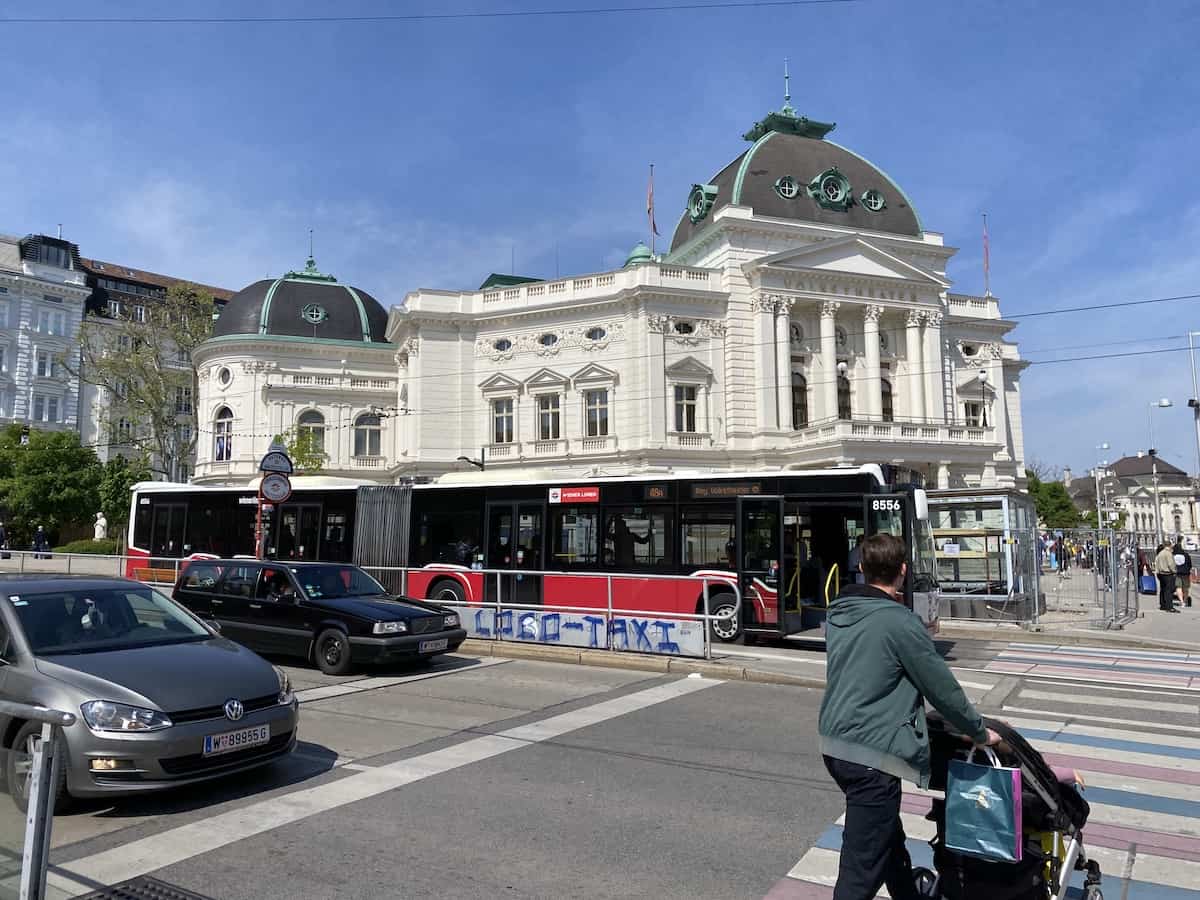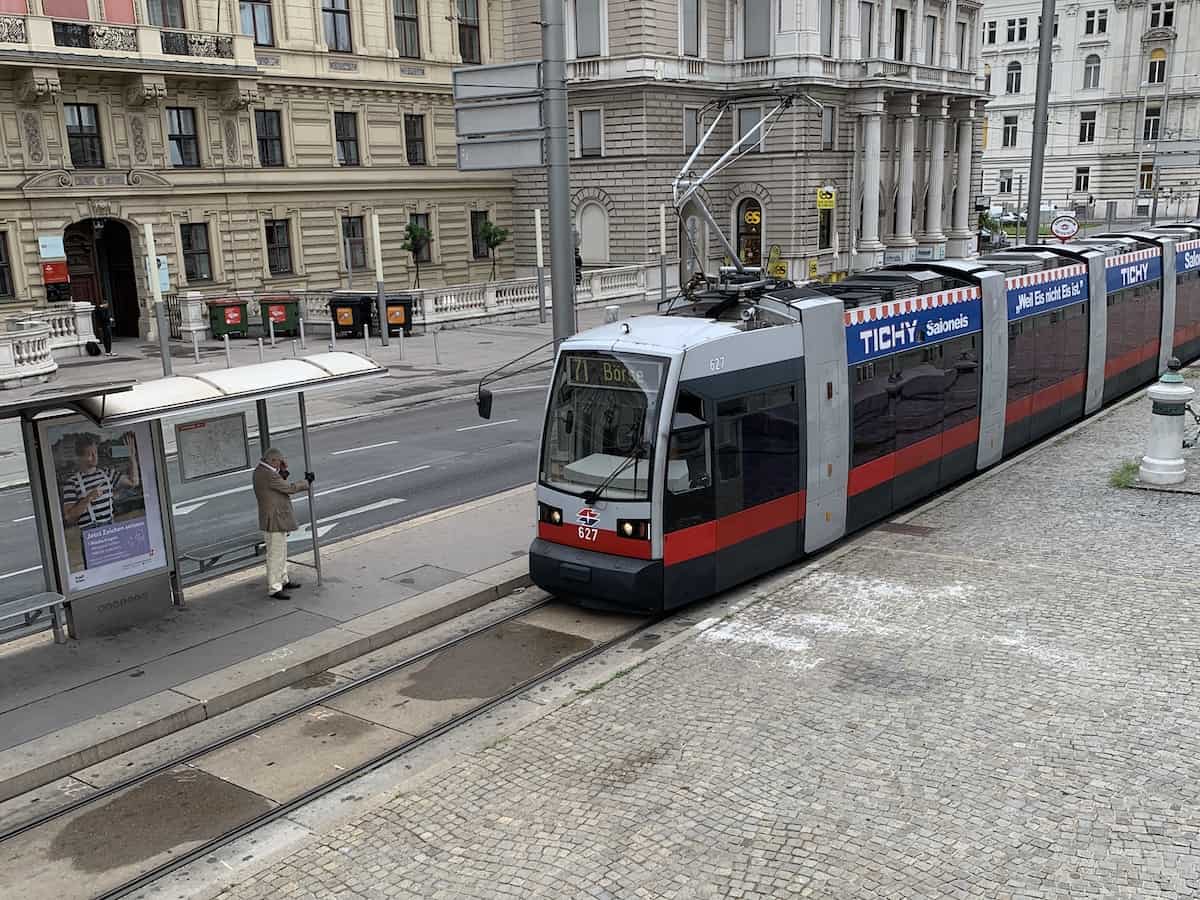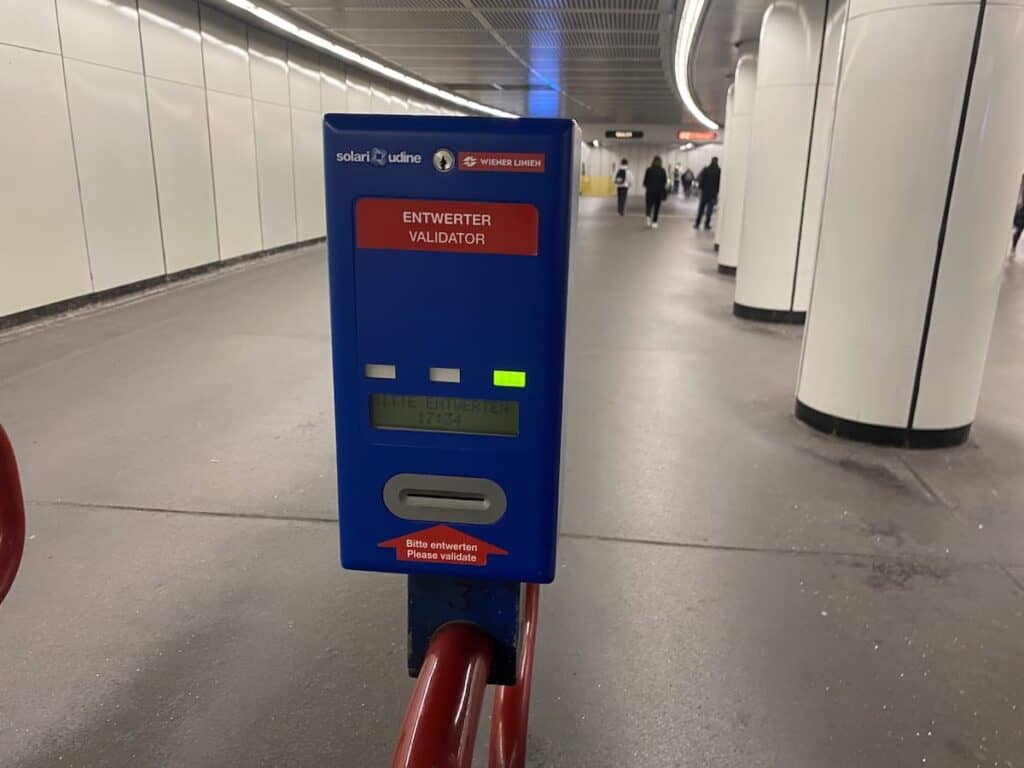Stepping off the plane in Vienna, I was immediately struck by how seamlessly everything functioned. A short S-bahn ride whisked me from the airport to the heart of the city, effortlessly connecting me to trams and buses with near-perfect timing. I don’t know any city in the world where public transportation is as well-organized as in Vienna. It is fast, affordable, efficient, and very easy to explore the city in a short time. Public transportation in Vienna is managed by Wiener Linien. The network consists of five metro lines (U-Bahn), 28 different tram lines (Bim or Straßenbahn), and 129 bus lines (including night buses).
Public transportation in Vienna is a highly complex network of metros (U-Bahn), trams, and buses. In between, the trains of ÖBB weave their way through the city.
The metro/subway in Vienna

The metro or subway network in Vienna consists of five lines. In every respect, it is the fastest way to get around Vienna. Practically, every major attraction in Vienna has a metro station nearby.
During the day, almost every line sees a metro arrive at a station 12 times per hour. After peak hours and on weekends, the frequency is slightly lower. The success of the Vienna metro can be seen in the number of passengers it serves daily. In comparison, the London Underground, with a much larger network, sees around 1.35 billion annual passengers, while Berlin’s U-Bahn serves about 553 million. Vienna’s efficient and well-connected system proves its effectiveness by handling over 409 million passengers annually, despite its smaller size. In 2022, well over 409 million passengers used the Vienna U-Bahn.
(In the photo, the metro is entering Schönbrunn station, which is partially above ground.)
Busses in Vienna

Vienna has 129 bus lines operating daily. These buses are mainly found outside the city center, as the network of trams and metros sufficiently covers urban transport needs. Additionally, buses in Vienna’s city center often struggle with traffic congestion and delays.
Buses primarily serve areas without metro or tram access, ensuring that residents in those districts can quickly reach one of the main stations.
Night buses run exclusively at night and mainly replace tram lines, as trams make significantly more noise than buses. Night buses are recognizable by an “N” before the route number.
Buses are also frequently used as replacement transportation (Schienenersatzverkehr) during maintenance on tram and metro tracks. Such maintenance is only carried out during holiday periods.
Trams in Vienna

The Straßenbahn (tram) is an essential part of the public transport in Vienna. Alongside the metro, trams play a significant role in transporting passengers, particularly in the city centre and surrounding districts. Currently, there are 28 tram lines, covering nearly 225 kilometres of track with 1,071 stops. A tram in Austria is called a Straßenbahn, and in some dialects, it is also referred to as a Bim (from Bimmelbahn).
More and more trams in Vienna are wheelchair accessible, although older trams with high steps may still appear occasionally. Typically, a fully accessible tram arrives within 10 minutes. You can identify these on station boards, where a wheelchair symbol is displayed next to the line number.
The tram in the photo above is a so-called Niederflur tram. This means that the floor near the doors is lowered, making it very easy to board with mobility aids. If necessary, the tram driver can also extend a ramp to minimize the gap between the tram and the platform.
The S-Bahn – Vienna’s rapid transit network

The train network around Vienna is not managed by Wiener Linien but by the Austrian Federal Railways (ÖBB). These trains operate every 20 minutes and connect Vienna’s suburbs and nearby cities with the capital. Vienna Airport is also linked to this rapid transit network.
Every S-Bahn station in Vienna has good tram or metro connections to facilitate further travel within the city. The Vienna City Card allows free travel on the S-Bahn within zone 100.
The most important S-Bahn for tourists is the S7, which runs directly from Vienna Airport to the city centre.
How to buy your ticket for the Public transport in Vienna
There are several options for purchasing tickets for Vienna’s public transportation, both in the city and online:
- Single Ticket: Allows travel for one journey.
- 24/48/72-hour Ticket: Unlimited travel for the chosen duration.
- Vienna City Card: Offers free public transport and discounts on various attractions. [More info and purchase >>]
- Weekly Pass: Valid for unlimited public transport use for one week. This pass is transferable and valid for multiple people. However, the start date is fixed: it begins on Monday at 00:00 and is valid until the following Monday at 09:00.
- 8-Day Flexible Pass: Valid for any eight days of your choice. This pass can be used by multiple travellers.
Most tickets must be validated before use. Validation machines are located at metro station entrances, inside trams, and on buses. Simply insert or scan your ticket in the machine before boarding to ensure it is marked with the correct date and time. You can find more information on how to validate your ticket, as well as where to buy them both online and in person. Note that you cannot purchase tickets from inspectors.
How to validate your ticket on the public transport in Vienna

Most tickets must be validated before use. Validation machines are located at metro station entrances, inside trams, and on buses. Simply insert or scan your ticket in the machine before boarding to ensure it is marked with the correct date and time. You can find more information on how to validate your ticket, as well as where to buy them both online and in person. Note that you cannot purchase tickets from inspectors.

Fare evasion in Vienna
It is easy to enter metro stations or board trams without a ticket, as there are no gates or barriers at the entrance. However, fare evasion in Vienna is expensive. If caught by one of the inspectors—who check more than 20,000 tickets daily—you will have to pay €105 immediately. Quite a waste of money! Also, be aware that most inspectors wear plain clothes and do not have uniforms, but they will always be able to show identification.
